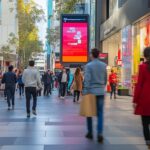Foot traffic analytics is transforming how festivals measure attendance and enhance the overall experience for attendees. By analyzing the data related to visitor movements, event organizers can gain valuable insights into attendance patterns and the factors that influence them. This article explores how foot traffic analytics can be utilized to increase turnout and revenue while also fostering a more interactive and enjoyable environment for festival-goers.
Explanation of Foot Traffic Analytics and Its Importance
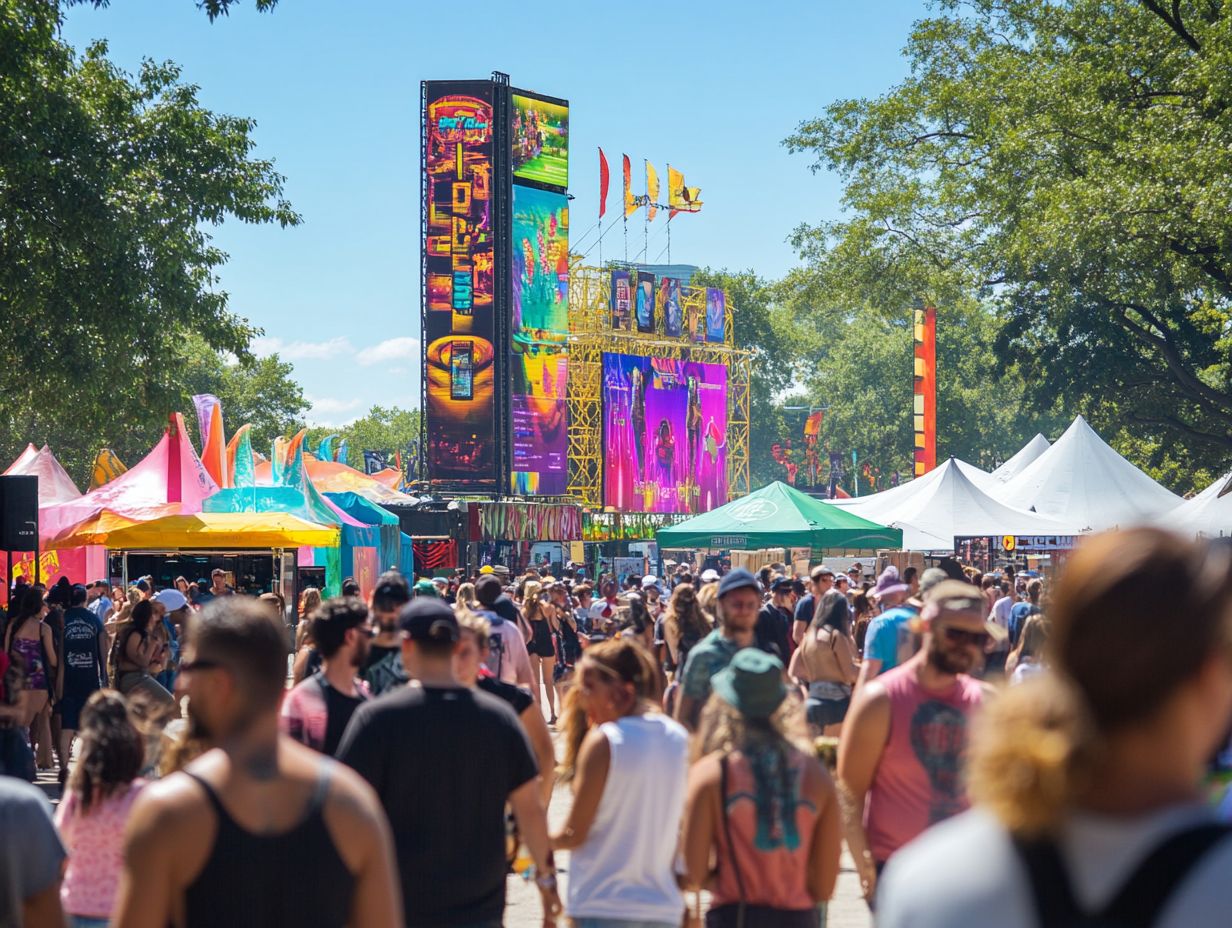
Foot traffic analytics is crucial for understanding visitor behavior at events, festivals, and public spaces. Through advanced data analysis, event organizers can gain insights into crowd dynamics, traffic flow, and demographics, which are essential for effective event planning, enhancing user experience, and analyzing festival attendance patterns and turnout rates.
The use of location intelligence and real-time data enables event stakeholders to make informed decisions, improve operational efficiency, and more accurately forecast attendance trends through predictive modeling. As a result, this leads to better marketing strategies, enhanced consumer insights, and improved event outcomes through increased engagement and sponsorship opportunities.
Plus shaping the logistics of major events, foot traffic analytics plays a significant role in various retail environments, public transportation hubs, and tourist destinations. Organizations can track customer pathways using analytics software and mobile data for location tracking, which helps identify areas of high engagement and potential bottlenecks.
This not only enhances the visitor experience but also allows organizations to target their marketing efforts more effectively by leveraging real-time data analytics to reach specific demographics and tailor promotions, ensuring effective consumer engagement and event marketing.
Furthermore, the insights gained from foot traffic analytics can foster greater community engagement by informing designs and experiences that resonate with the local population and analyzing demographic profiling, ensuring that all stakeholders benefit from data-driven decisions and enhanced festival success.
Festival Attendance Patterns
Analyzing festival attendance patterns provides valuable insights for organizers aiming to enhance their events. By examining historical data and current attendance trends, festival planners can identify seasonal effects and adjust their marketing strategies accordingly.
Demographic insights and crowd dynamics are crucial in predicting attendance, as they inform decisions regarding venue size and resource allocation. This type of analysis facilitates a more effective planning process, ultimately enhancing the experience for attendees and leading to increased engagement and potential revenue generation.
Factors Affecting Festival Attendance
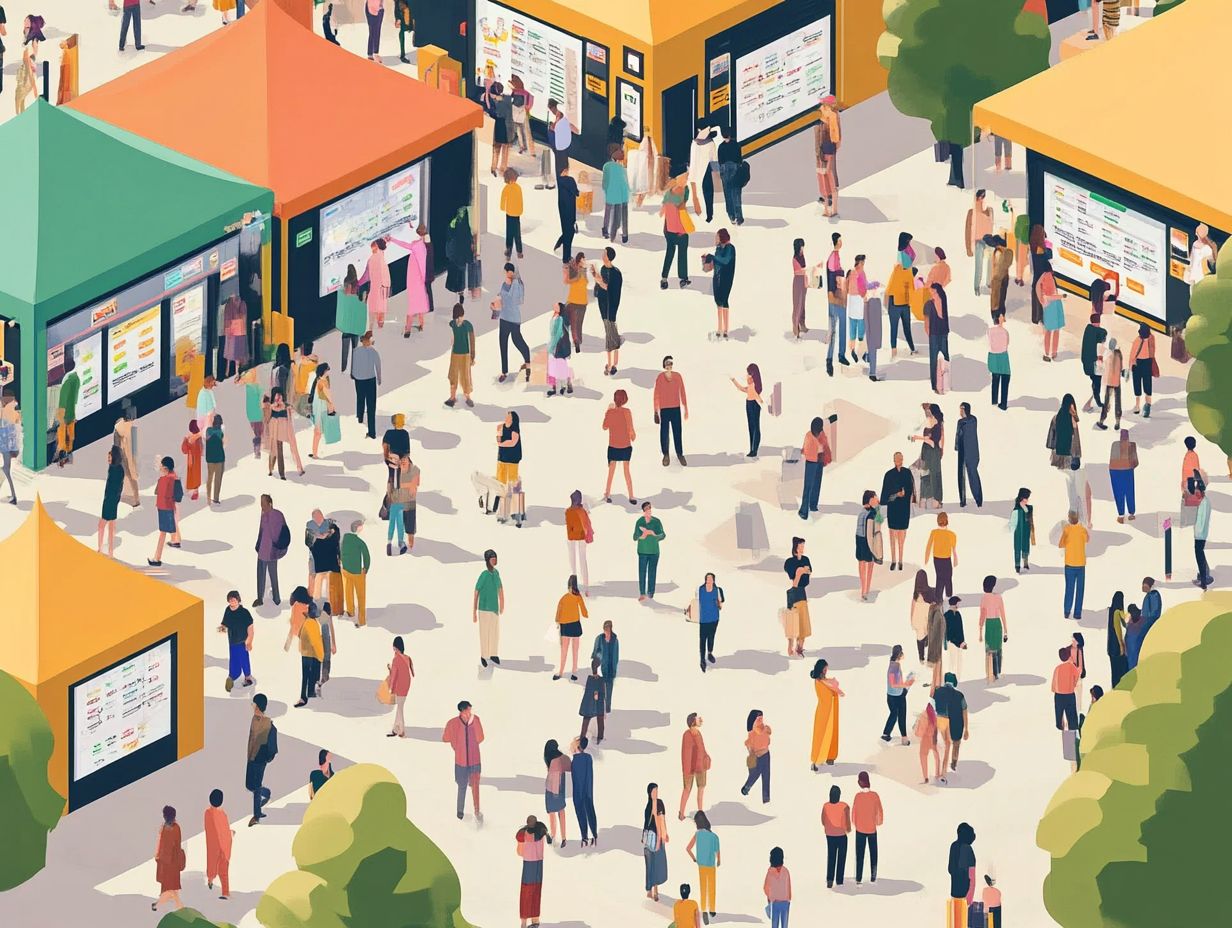
Several factors influence festival attendance, including marketing strategies, community participation, and seasonal effects. Festival organizers must understand how demographic insights impact ticket sales to maximize engagement and attendance.
The role of social media is particularly significant, as it serves as an effective tool for promoting festivals and attracting visitors. Analyzing these factors provides a comprehensive approach to enhancing festival success and optimizing the overall user experience.
One of the most critical elements affecting attendance is a festival’s ability to reflect the community’s cultural values and interests. This can be achieved by collaborating with local artists and businesses. Seasonality also plays a crucial role; festivals held during peak tourism seasons tend to attract higher attendance compared to those scheduled in the off-season.
Innovative marketing strategies that leverage the popularity of social media can be particularly effective, as many potential attendees are active on platforms like Instagram, TikTok, and Facebook. Engaging, live, and interactive posts can generate buzz and excitement for the festival, creating a sense of community among attendees. This community can further amplify word-of-mouth marketing by sharing their experiences on the same platforms.
By understanding and utilizing these key factors, festival organizers can not only boost attendance but also enhance the overall experience for all stakeholders involved.
Using Foot Traffic Analytics to Understand Festival Attendance
Utilizing foot traffic analytics is a crucial strategy for understanding festival attendance and enhancing event outcomes. By conducting thorough data analysis, festival organizers can predict attendance trends, effectively segment visitors, and gain valuable insights into crowd dynamics that influence logistical planning and operational efficiency.
Predictive analytics also enable the evaluation of the economic impacts of festivals, illustrating how foot traffic translates into revenue generation and community benefits. This data-driven approach not only streamlines the planning process but also improves the attendee experience, making it an essential tool for the event industry.
Collecting and Analyzing Data
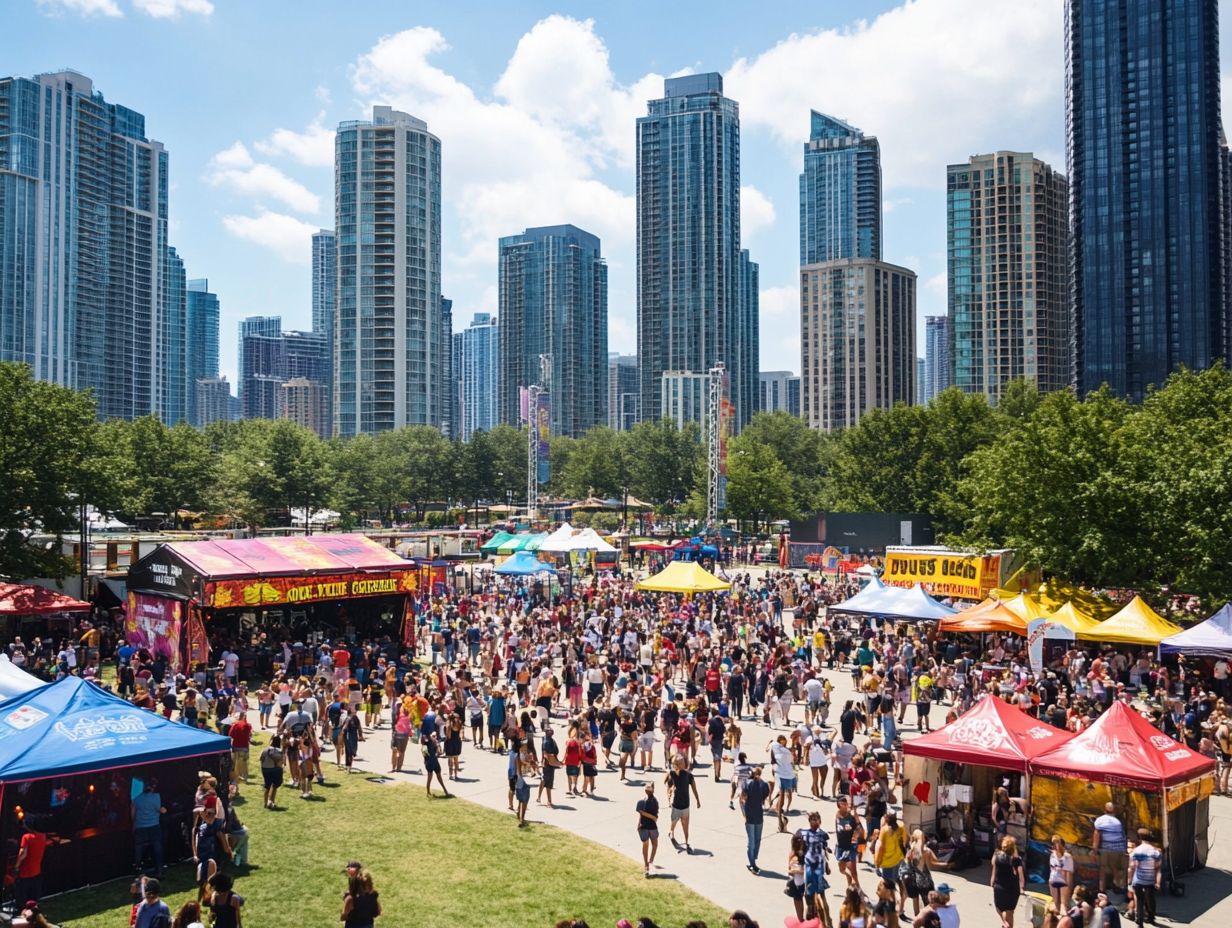
Data collection and analysis are crucial for understanding foot traffic and enhancing festival attendance. Festival organizers utilize various methods, including mobile tracking, surveys, and heat maps, to gather comprehensive data on visitor habits and preferences.
Real-time data collection enables immediate adjustments to the user experience, while behavioral analysis of user-generated content provides valuable feedback. Together, these approaches create a robust data analysis framework that ensures festivals meet attendee needs and maximize engagement.
Data Collection Method Descriptions:
- Mobile Tracking: This method involves real-time behavioral data collection through mobile GPS tracking, which helps determine the number of visitors at different times, their movements, and the duration of their stay.
- Surveys: Surveys gather qualitative data on visitor preferences and behavioral patterns. They can be conducted during or after the event to gain insights into attendee experiences.
- Heat Maps: Heat maps offer a visual representation of visitor flows, highlighting popular areas, bottlenecks, and movement patterns throughout the festival.
- Behavioral Analysis: This method involves monitoring user-generated content to assess satisfaction levels, gather suggestions, and obtain feedback regarding the festival experience and engagement.
The collection and analysis of data through these methods facilitate real-time observations and feedback, ultimately leading to improvements in future festivals.
Interpreting Data and Identifying Patterns
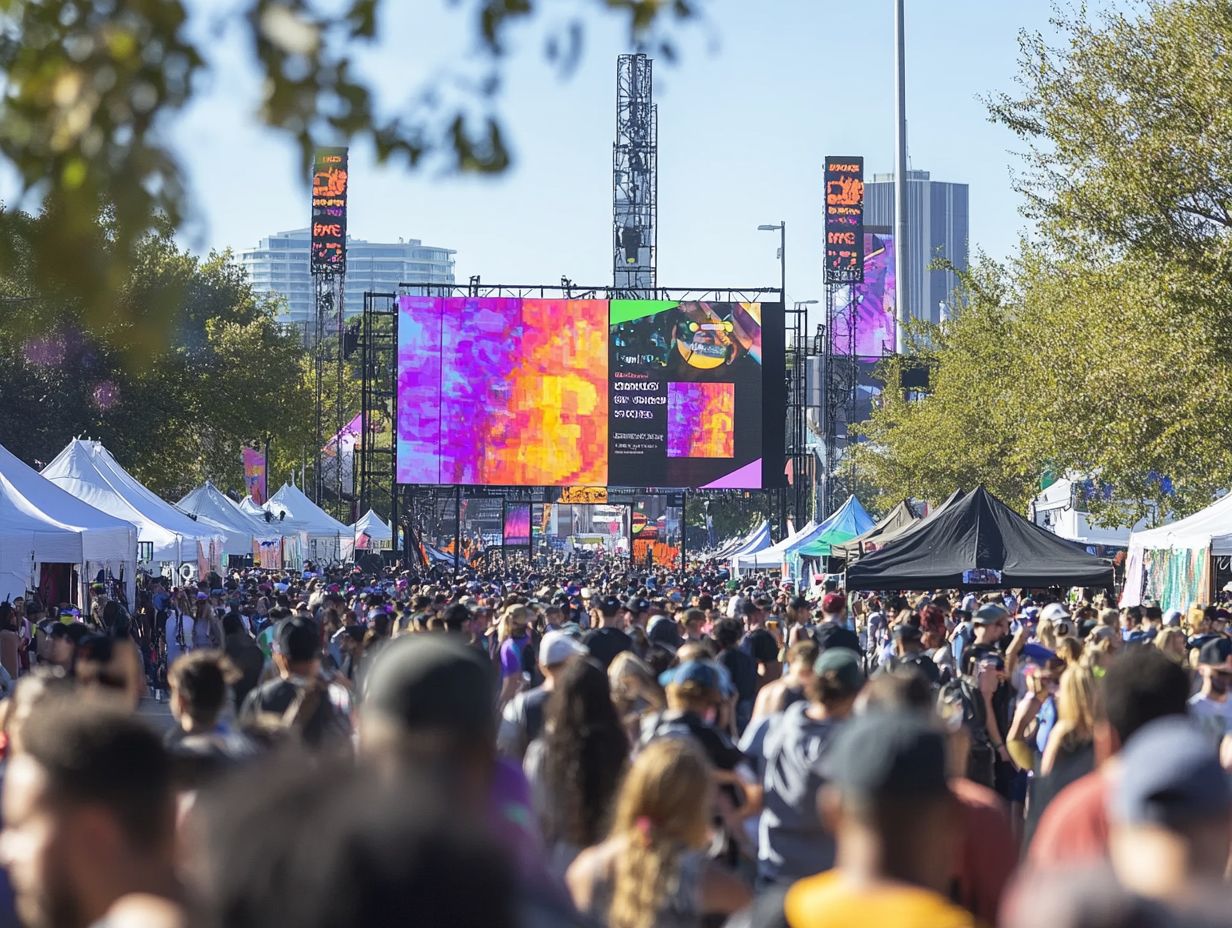
Interpreting data and identifying patterns is crucial for making strategic decisions that enhance festival attendance. By analyzing the collected data, organizers can uncover insights that reveal attendance patterns, visitor turnout, and economic impact.
Data interpretation employs methodologies such as statistical analysis and data visualization tools to provide deeper insights into complex datasets. For instance, using software like Tableau or Excel for visual analytics enables festival planners to quickly identify outliers and emerging trends over time.
Additionally, surveys and social media sentiment analysis yield qualitative data, providing insights into participation trends and consumer insights that complement the quantitative data, offering a more comprehensive view of attendee preferences and behaviors.
Together, these approaches enable organizers to make informed decisions and optimize marketing efforts, ensuring the festival remains appealing to both returning and new attendees.
Benefits of Leveraging Foot Traffic Analytics for Festivals
Leveraging foot traffic analytics for festivals offers several benefits, including increased event success, improved operational efficiency, and enhanced audience engagement.
By analyzing data on visitor behavior and engagement metrics, organizers can gain insights into engagement rates, which can be boosted by tailoring festivals to better meet the needs of their audience and enhance audience retention.
Understanding audience engagement also aids in logistical planning and operational efficiency, while fostering greater community involvement and engagement opportunities at the festival.
Strategies based on these insights can lead to more successful events and increased revenue generation.
Improving Attendance and Revenue
Festival organizers can achieve their primary goal of increasing attendance and revenue by utilizing foot traffic analytics. Data-driven, targeted marketing strategies can enhance sales and broaden audience reach.
By analyzing visitor behavior metrics, organizers can boost both attendance and engagement, making it easier to increase revenue from the event. For instance, by studying foot traffic patterns, organizers can determine when people are most likely to attend and adjust their marketing efforts accordingly.
Employing location-based marketing techniques, such as sending notifications through mobile apps during peak traffic hours, can help drive last-minute ticket sales. Tracking foot traffic also allows organizers to identify which attractions and food vendors are most popular, enabling them to adjust layouts and offerings to maximize attendance across the festival.
Additionally, gathering insights through post-event feedback surveys and post-event analysis can help fine-tune future efforts, attract repeat visitors, and enhance visitor loyalty, ultimately improving revenue.
Enhancing Festival Experience for Attendees
Enhancing the festival experience for attendees is essential for creating memorable impressions and encouraging repeat visits. Foot traffic analytics can assist organizers in achieving this goal by providing insights into visitor behavior and preferences, allowing them to customize experiences that resonate with their audience.
This data-driven approach improves the overall user experience, promotes community impact, and increases engagement rates through effective experiential marketing strategies. For instance, understanding which areas of the venue attract the most foot traffic enables planners to strategically position food trucks, art installations, or immersive events in high-traffic locations to enhance engagement. By utilizing analytics and data analysis, planners can gain insights into visitor behavior and crowd dynamics, using tools such as GPS analytics and heat maps for better spatial analysis and venue optimization.
Additionally, personalized recommendations based on previous attendee patterns and event metrics can help create unique experience pairings, such as crafting workshops for families or VIP lounges for returning attendees. By leveraging this information, including demographic profiling and historical data, organizers can foster an environment where each attendee feels valued and included, transforming a one-off event into a memorable experience that generates excitement and loyalty for future festivals. This approach also aids in festival planning, attendance forecasting, and understanding participation trends to ensure event success and maximize festival attendance.



